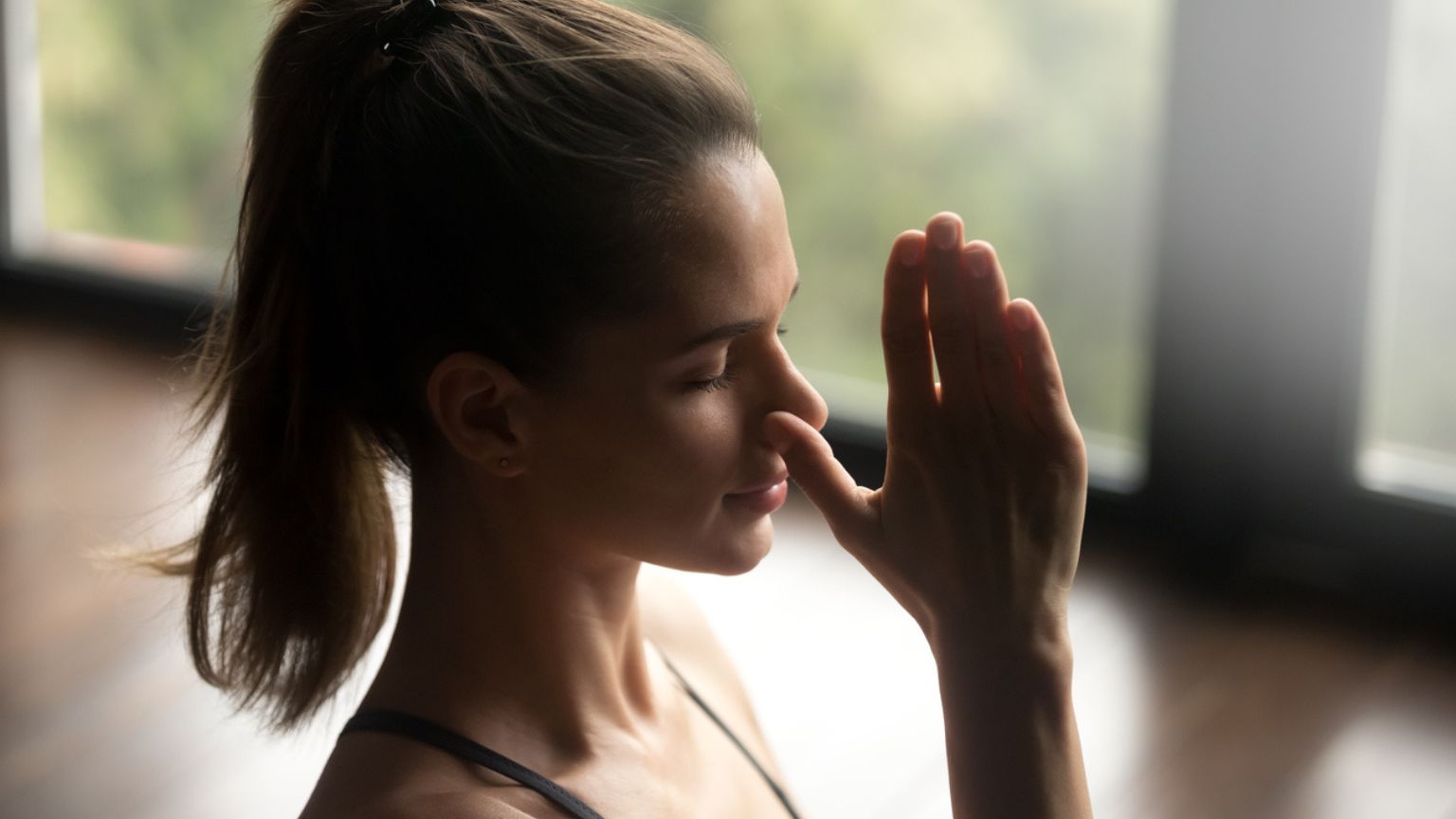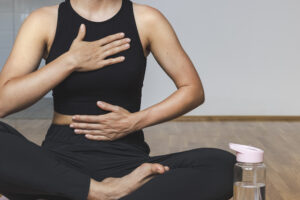Can breathing exercises improve your health? Healthista asks Tim Ives, a UK based breathing expert to share 5 simple breathing exercises that help to boost immunity in just 10 minutes
We have known for some time that the amount of air we breathe and the speed of inhalation affects our general health.
Slow, deep nasal breathing is a sign of health. Whereas, fast, shallow mouth breathing is a sign of disease.
Therefore, the more a person can slow down their breathing, the healthier they will be. In fact, new research is now starting to explain why and provide answers to these questions.
By understanding how the brain and breathing are connected, we are discovering why healthy breathing improves our immune system and reduces stress. We are also beginning to understand that our emotions and the way that we behave are determined by the way that we breathe.
an even more exciting way to delay or prevent different types of dementia
Periods of slow, calm nasal breathing have been demonstrated to improve memory function in older people suffering early signs of cognitive impairment. This latest research on breathing and cognitive decline presents an exciting potential treatment and an even more exciting way to delay or prevent different types of dementia.
My advice would be, don’t wait for the research. You can immediately start trying to improve your health and prevent cognitive decline by slowing down your breathing.
Eventually, you’ll easily fit breathing exercises into your current daily routine to improve all aspects of your health.
READ MORE: Reduce anxiety with this quick breathing technique
It’s as simple as spending 10 minutes a day with a focus on the following 5 breathing techniques to boost your immunity:
Step 1 – Physical Posture
Firstly, stop, clear your mind and focus on breathing – nothing else.
Begin by ensuring your basic breathing posture and technique is correct. Sit up with a straight back, not slumped. The straighter the posture, the more volume is available to your lungs.
The more volume – the slower you can breathe and the more relaxed and less anxious you will be.
Step 2 – Oral posture
Push your tongue up to the roof of your mouth, purse your lips together, making sure your teeth are apart. When your tongue goes up, so does your physical posture!
Try it – drop your tongue to the floor of your mouth and you will feel like slumping. The opposite happens when you bring your tongue up into your palate.
Step 3 – Inhale and exhale through your nose
Breathing through our nose prevents us removing carbon dioxide (CO2) too quickly, whereas mouth breathing removes CO2 too quickly. The more CO2 we have in our red blood cells, the speed of oxygen release into our brain and muscles is optimised, so we have more clarity of thought and more energy.
Depriving ourselves of nitric oxide can also cause other health concerns. In fact, it has been found to help memory, can assist the immune system in fighting off bacteria, regulate blood pressure, reduce inflammation, improve sleep quality, increase endurance and strength, and assist in gastric motility.
Our noses filter 98 percent of bacteria and allergens
Our nose is a very effective natural filter and does a great job at keeping many airborne viruses at bay. Our noses filter 98 percent of bacteria and allergens, so breathing through our noses is recommended if you’re looking for protection.
To enable easy nose breathing, I recommend using a natural daily nasal spray that will ensure that you have maximum efficiency and prevent allergic rhinitis and infections which can lead to inflammation and congestion.
I like to use Xlear Nasal Spray, £8.16 as it contains Xylitol which has antibacterial qualities, it’s completely natural and has no side effects.
READ MORE: 4 natural ways to help manage hay fever symptoms
Step 4 – Breathe in and out as slow as possible through your nose
The slower we breathe, the more efficient our respiratory system. Fast mouth breathing when stationary results in less oxygen reaching the lungs and slow nasal breathing results in more oxygen reaching our lungs.
When breathing rapidly through the mouth, there is a lot of ‘wasted air’ that doesn’t get used.
Step 5 – Focus on your diaphragm
Push your tummy out, inhale through the nose, then we you exhale, bring your tummy in. Don’t force air in and out through the nose, allow your diaphragm to do this for you.
Focusing on our diaphragm is another de-stressor technique and this will help bring calm, especially when feeling anxious.
Discover your Control Pause (CP)
- Take a small, silent breath in and let a small breath out through your nose.
- Hold your nose with your fingers to prevent air from entering your lungs.
- Count the seconds until you feel an involuntary twitch in your diaphragm.
- Release your nose and breathe in slowly.
Tip – If you feel like you are gasping for breath, you have held your breath for too long. Use a stopwatch on a mobile phone to time yourself.
The time is your baseline measurement. If in doubt, do it a few times to get a reliable result. Improving your CP is the goal, so take this regularly to monitor your improved breathing.
READ MORE: 6 healthy tips to prevent the effects of bloating
If your CP is less than 10 seconds:
- Close your mouth and breathe through your nose day and night.
- Stop sighing. If you feel a sigh coming, try to stop it by not opening your mouth.
- Apply gentle, calm, quiet breathing at all times.
- Yawn with your mouth closed.
- Tip: wear Myotape at night (also available from www.myotape.com) to ensure that you are nasal breathing whilst asleep. This will also reduce snoring.
Do not attempt any other breathing exercises until your CP is above 10 seconds.
If your CP is between 10 and 20 seconds:
- Carry out all the above 4 key points.
- Practiced reduced breathing.
- Reduced Breathing exercise.
- Sit in the correct breathing posture.
Focus on breathing through your nose and bring your breathing down so that you are breathing as slow as possible in and out through your nose. You are looking to create a slight ‘air-hunger’ but not so that it is too uncomfortable that you need to gasp for air.
you will notice an improvement in your energy levels
If you do these quiet controlled reduced breathing exercises for 4 minutes at regular intervals throughout the day and regularly monitor your CP, it will improve and you will notice an improvement in your energy levels.
If your CP is above 20 seconds:
- Carry out the exercises above for a CP below 10 and below 20.
- Breath holds whilst walking.
- Breath holds whilst walking (only do this if your CP is above 20)
- While walking take a small breath in, breathe out and hold your breath.
- Walk 5-10 paces while maintaining your breath hold.
- Resume relaxed nasal breathing and continue to walk.
- After 1 minute of walking with nasal breathing, repeat the breath hold.
Repeat this sequence six to eight times with a small breath hold every minute.
Keep regularly taking your CP. When it is over 30, you will start to feel great. This can be maintained by carrying out these simple breathing exercises. You may start to feel that you can extend your breath holds. Your target is 40 seconds.
Tim advises that you should check with your GP if have any of the following medical issues: asthma, COPD, diabetes, epilepsy, chest pains, sickle cell anaemia, arterial aneurysm, heart problems, uncontrolled hyperthyroidism, cancer, emphysema, high blood pressure, depression or pregnancy prior to embarking on any breathwork exercises.
Tim Ives is a UK based breathing expert and he specialises in Buteyko breathing.
Like this article? Sign up to our newsletter to get more articles like this delivered straight to your inbox.
























































